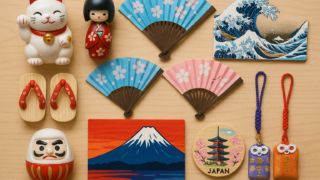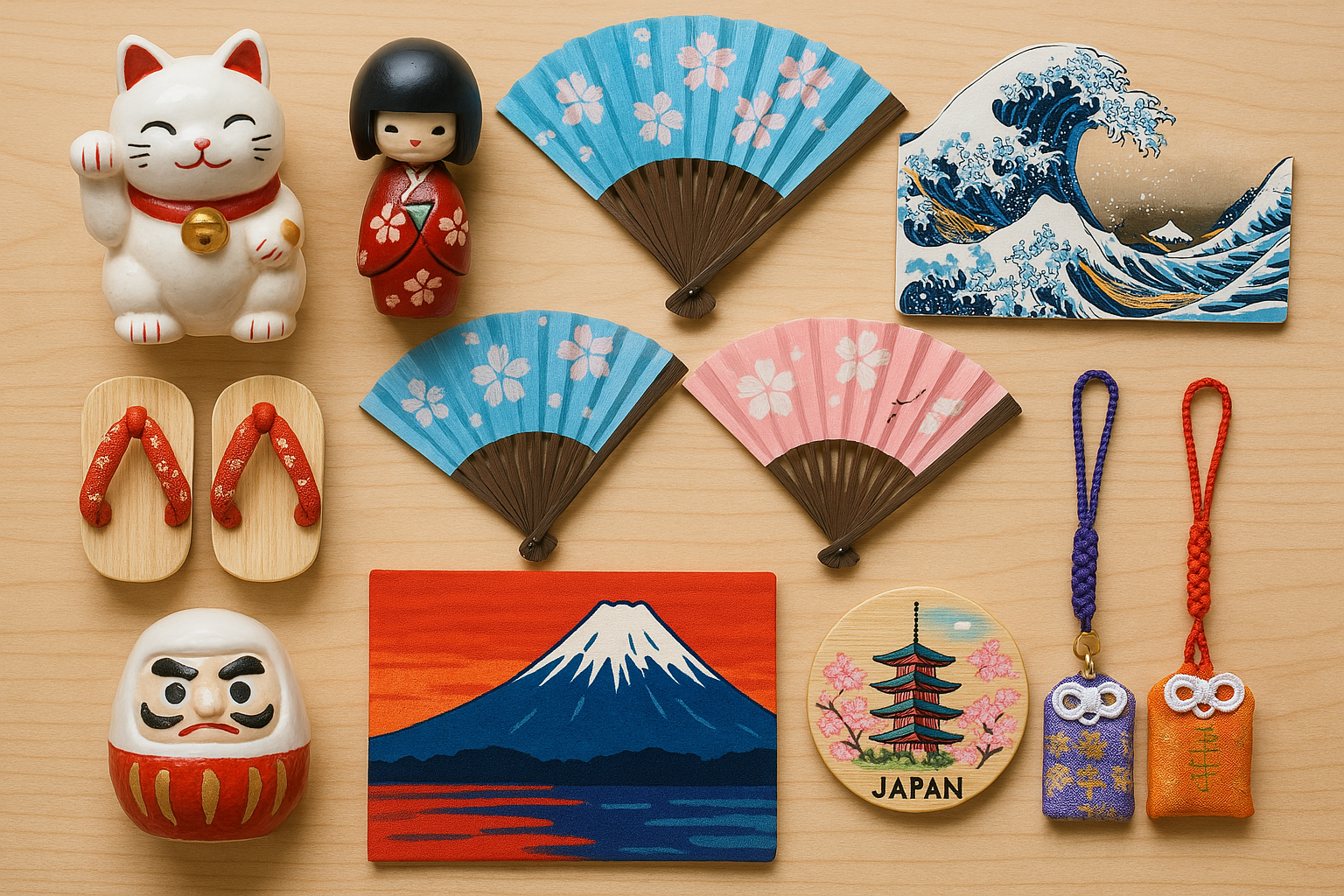I Want This! A Guide to the Best Japanese Cultural Souvenirs for Tourists That’ll Make Your Friends Jealous
- Unveiling the Charm of Japanese Cultural Souvenirs
- Traditional Japanese Crafts That Speak of Heritage
- Souvenirs for the Spirit: Religious and Spiritual Gifts
- Kawaii Culture Meets Tradition
- Japanese Stationery: Where Function Meets Beauty
- Japanese Clothing as Wearable Souvenirs
- Regional Specialties You Can’t Miss
- Where to Shop Without Regret
Unveiling the Charm of Japanese Cultural Souvenirs
Let’s face it — we all want that “OMG, where did you get that?!” reaction when handing out souvenirs. In Japan, souvenirs aren’t just fridge magnets or “I ❤️ Tokyo” T-shirts. They’re tiny cultural ambassadors. From spiritual charms to hand-crafted art pieces, Japanese souvenirs tell stories, carry blessings, and reflect centuries of tradition. As your friendly neighborhood tour guide, let me walk you through the wonderful (and sometimes quirky) world of Japan’s best cultural keepsakes.
Why Japanese Souvenirs Are More Than Just Gifts
In Japan, giving souvenirs — or omiyage — is practically an art form. It’s not just about buying something cute. It’s a thoughtful ritual. People returning from trips are almost obligated to bring back region-specific treats or gifts for family, friends, or even coworkers. The meaning goes beyond the item itself — it’s about showing appreciation, maintaining harmony, and sharing your experiences. It’s kind of like saying, “I saw this and thought of you… and yes, I still have a job, so here’s a snack.”
The Cultural Meaning Behind Every Item
Ever held a folding fan and felt instantly elegant? Or opened a wooden box and caught the faint scent of cedar? Japanese souvenirs aren’t just pretty things; they carry deep meaning. A Daruma doll represents perseverance. A beckoning cat welcomes good luck. A tenugui (Japanese towel) might showcase seasonal patterns or symbols tied to nature’s rhythms. When you pick a souvenir, you’re picking up a story — one that continues with whoever receives it.
Traditional Japanese Crafts That Speak of Heritage
Japan has this magical ability to make the ordinary feel sacred. Even chopsticks or a tea cup can feel like a work of art. Traditional crafts, often passed down for generations, are your gateway to Japan’s heritage. They’re like Instagrammable history lessons you can take home.
Woven with History: Nishijin-ori and Other Textiles
Think of Nishijin-ori as Japan’s version of haute couture — but with 1,200 years of craftsmanship behind it. Originating in Kyoto, this intricate woven textile was once reserved for nobility and samurai. Now, you can snag accessories like wallets, hair ties, or even neckties made with Nishijin patterns. It’s like wearing a bit of Kyoto’s soul — without the need for a kimono-fitting lesson.
How to Spot Authentic Craftsmanship
Authentic pieces often carry a tag from a certified artisan or cooperative. If the item feels unnaturally cheap or mass-produced, it might not be the real deal. Look for fine detailing, natural fibers, and — this may sound silly — weight. True handmade items often feel heavier, more solid. It’s the difference between a souvenir and a future heirloom.
The Magic of Japanese Pottery and Ceramics
There’s something grounding about holding a handmade Japanese tea cup — like it wants to tell you the story of the clay it came from. Whether it’s the rustic feel of Bizen ware or the elegance of Arita porcelain, Japanese ceramics embody “wabi-sabi,” or the beauty of imperfection. Each glaze, texture, and shape is unique, almost as if the potter left a fingerprint in history.
Where to Buy Handmade Masterpieces
Skip the airport shops. Instead, head to pottery villages like Mashiko or visit local weekend markets in cities like Kanazawa or Kyoto. If you’re in Tokyo, Kappabashi Street is a goldmine. Some shops even let you try your hand at pottery — so you can go home with a “slightly crooked, but made-it-myself” souvenir!
Souvenirs for the Spirit: Religious and Spiritual Gifts
Whether you’re superstitious or just love beautiful traditions, Japan offers spiritual souvenirs that connect you with centuries-old customs. They’re thoughtful, meaningful, and often the most talked-about gifts when you get home.
Omamori: Pocket-Sized Blessings from Shrines
Omamori are tiny cloth amulets you can find at almost every shrine or temple in Japan. There’s one for just about every life situation — love, travel safety, school exams, even finding a job. My personal favorite? The “no traffic accidents” charm — a must if you’ve ever been in a Tokyo taxi during rush hour. Remember not to open the pouch — the blessing’s power is sealed inside!
Folding Fans (Sensu) with Seasonal and Symbolic Designs
Forget souvenir T-shirts — nothing says “I’ve been to Japan” like a beautifully painted folding fan. They’re elegant, practical, and lightweight enough to carry 10 of them back home. Each fan design often has seasonal motifs — cherry blossoms for spring, waves for summer, maple leaves for autumn. It’s like carrying a piece of Japan’s seasonal poetry in your purse or pocket.
Kawaii Culture Meets Tradition
Japan is the only place where a samurai and Hello Kitty can coexist on the same keychain. If you’re into all things cute but want something with cultural flair, you’re in the right country. Let’s dive into the world where cuteness meets centuries-old traditions.
Cute Meets Culture: Character Goods with a Traditional Twist
Ever seen a Maneki Neko (beckoning cat) dressed like a ninja? Or Rilakkuma in a yukata? Japan’s got this knack for blending pop culture with tradition. Places like Asakusa and Kyoto sell exclusive merchandise — think Pikachu with a folding fan or Doraemon on a rice cracker tin. These make perfect gifts because they’re fun, instantly recognizable, and still uniquely Japanese.
Where to Find Them in Harajuku and Beyond
Takeshita Street in Harajuku is ground zero for cute chaos — and a great place to find limited-edition souvenirs. But don’t miss places like Tokyo Character Street inside Tokyo Station or themed pop-up stores in department stores. And trust me, even if you’re “not into cute stuff,” you’ll walk out with something adorable.
Japanese Stationery: Where Function Meets Beauty
Japanese stationery has a fan base so devoted, it borders on a cult following. And I’m a proud member. Whether it’s a washi tape with Mount Fuji or a fountain pen that glides like a dream, these souvenirs aren’t just pretty — they’re practical magic.
Washi Tape, Fude Pens, and More That You’ll Actually Use
Washi tape is decorative masking tape that comes in endless designs — cherry blossoms, sushi rolls, lucky cats. Pair that with a brush pen (fude pen) and you’ve got a gift that says “artsy and classy.” Don’t forget stationery sets with Japanese prints or tiny stamps with lucky motifs — they make the perfect compact gifts for coworkers or fellow journaling nerds.
Souvenir Ideas for Students and Creative Souls
For students, go for lucky exam charms, compact notebooks, or pencil cases with Japanese art. For creatives, brush pens and watercolors from stores like Itoya in Ginza or Loft in Shibuya will be a hit. One time, I bought a ¥300 notebook in Kyoto — and my designer friend in New York still says it’s the nicest one she’s ever owned.
Japanese Clothing as Wearable Souvenirs
Why not wear your souvenir? Traditional clothing items like yukata and jinbei are comfortable, beautiful, and totally photo-worthy. Just be prepared for compliments (and possibly some fashion envy) when you get back home.
Yukata, Jinbei, and the Casual Side of Kimono Culture
Yukata are lightweight summer kimonos, often worn to fireworks festivals. Jinbei are like Japan’s version of stylish pajamas — comfy enough to sleep in, cool enough to wear outside. Both are fantastic alternatives to full-on kimono (which can be tricky to wear). Plus, they make excellent Instagram content.
Tips for Buying and Wearing Without Faux Pas
When trying on yukata, remember the left side always goes over the right — the opposite is for funerals. Look for sets that come with obi (sash) and geta (wooden sandals) for the full experience. Many souvenir shops in Kyoto offer foreigner-friendly kits with dressing instructions included — no YouTube tutorial required!
Regional Specialties You Can’t Miss
Every region in Japan has its own pride-and-joy souvenirs. From Kyoto’s traditional sweets to Okinawa’s vibrant crafts, it’s worth collecting items unique to each area you visit. Think of it as cultural Pokémon — gotta collect ’em all!
Kyoto, Tokyo, and Okinawa: Unique Souvenirs by Region
In Kyoto, you’ll find Yatsuhashi (cinnamon mochi) and elegant incense. Tokyo is big on modern twists — like matcha KitKats or Shibuya fashion goods. Down in Okinawa, keep an eye out for Ryukyu glassware and Shisa lion-dog figurines. My tip? Pack a little extra bag just for your regional finds — they add up fast.
How Local Culture Shapes Local Goods
Kyoto’s souvenirs reflect its historical elegance; Okinawa’s, its island spirit. Even the packaging is tailored to the culture — wrapped like origami or sealed with traditional motifs. It’s not just about what you buy; it’s about what the item says about where you’ve been.
Where to Shop Without Regret
Souvenir shopping in Japan can be a joy… or a trap. While airport stores and tourist hubs are convenient, the real treasures often lie in quieter corners or specialty shops. Let me be your guide to shopping smart (and not blowing your budget in the first two days).
Best Places for Cultural Souvenir Hunting in Japan
Local markets, craft fairs, and department store basements (called depachika) are hidden goldmines. Also, museums often have amazing, exclusive items in their gift shops. My personal favorite? The Edo-Tokyo Museum gift shop — I once bought an ukiyo-e-inspired puzzle that became a family bonding activity back home!
Hidden Gems vs. Tourist Traps: What You Need to Know
Avoid shops right outside major tourist spots — they tend to be overpriced and mass-produced. Instead, explore side streets or ask locals for their favorite artisan spots. Bonus tip: if the shop has a tiny old lady behind the counter wrapping things with surgical precision — you’re in the right place.






コメント